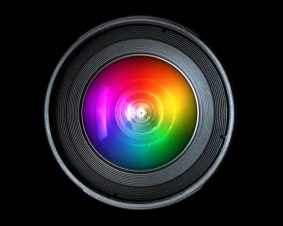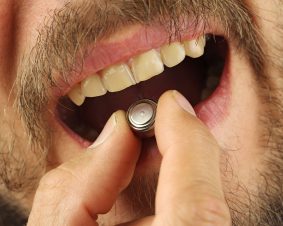 >
Spotlight December 2021: Silica nanoparticles improve plant disease resistance
>
Spotlight December 2021: Silica nanoparticles improve plant disease resistance
The resistance of plants to various pathogens is often increased in agriculture with various chemicals (“fertilizers”). A new direction is being taken with the use of nanoparticles. These can be sprayed on the plants. In the present study, the model plant Arabidopsis was used to investigate whether silicon dioxide nanoparticles (SiO2) can increase resistance to bacteria. For this purpose, plants were pretreated with silicon dioxide nanoparticles and then infected with bacteria. The plant hormone salicylic acid plays a major role in the defense against pathogens in plants. It is also used in human medicine as an antipyretic drug. Therefore, the content of salicylic acid in Arabidopsis leaves provided information about the protective function of silicon dioxide nanoparticles.
First of all, an uptake of the silicon dioxide nanoparticles via the pores of the leaves could be proven. Subsequently, a slow release of (ortho)silicic acid [Si(OH)4] occurs inside the leaves. (Ortho)silicic acid finally leads to the increased formation of salicylic acid by the plant, to which the actual protection against bacterial infections can be attributed. This shows that the administration of silicon dioxide nanoparticles was safer for the plant than the direct administration of (ortho)silicic acid. This is because the direct application of (ortho)silicic acid resulted in cellular stress responses, which were also visible by yellow leaves. In contrast, silicon dioxide nanoparticles in high concentrations showed no toxic effect, because the release of the effective (ortho)silicic acid is slow (depot effect). Only very small amounts of nanoparticulate silica are needed to exert a protective effect on the plant, making it a more cost-effective alternative comparing to other substances.
The authors caution that despite the beneficial properties of silicon dioxide nanoparticles for plant health, the long-term effects on farm workers, soil microorganisms and bees also need to be studied. Previous results with nematodes indicate a 36-fold lower toxicity of the nanoparticles, compared to liquid (ortho)silica. Thus, silica nanoparticles may be a safe and sustainable chemical for protection against plant diseases.
Original publication:
El-Shetehy M., Moradi A., Maceroni M., et al. Silica nanoparticles enhance disease resistance in Arabidopsis plants. Nat Nanotechnol. 2021;16(3):344-353. doi:10.1038/s41565-020-00812-0
More info on silica nanoparticles in our material text.

Weitere Spotlights
Spotlight November 2022: Photonics in nature and bioinspired designs
Science has always taken nature as a model and imitated it. If you look at the field of photonics, i.e. the use of optical technologies for information processing, transmission or storage, the colorful examples in the animal and plant world are perfect basic drawers for technical applications. While colors in nature are used either for […]
Read moreSpotlight October 2020: Nanosafety – Topic of the Future
Research on nanosafety is a driver of innovation as the spotlight in July has demonstrated. But furthermore, this research field is built on routine as well if researchers look for the “needle in the haystack”. In many areas the safety research initiates the development of new methods, e.g. for the determination of nanoparticles within exposed organisms via […]
Read moreSpotlight May 2023: Dual energy – edible batteries
An Italian research group reports on edible batteries that supply electric current and can be digested as food, thus providing energy a second time. What sounds funny at first has a serious background, because in medicine, power sources are needed that could be transported through the digestive tract and possibly remain in the body unintentionally, […]
Read moreSpotlight September: A methodology for the automatic evaluation of data quality and completeness of nanomaterials for risk assessment purposes
This paper describes a method for automatically assessing the quality and completeness of nanosafety data for the purpose of risk assessment. Steps to develop the methodology for assessing data completeness and the methodology for assessing quality are presented. The methodology is tailored to physicochemical and hazard (meta) data, but can also be configured with appropriate […]
Read more


